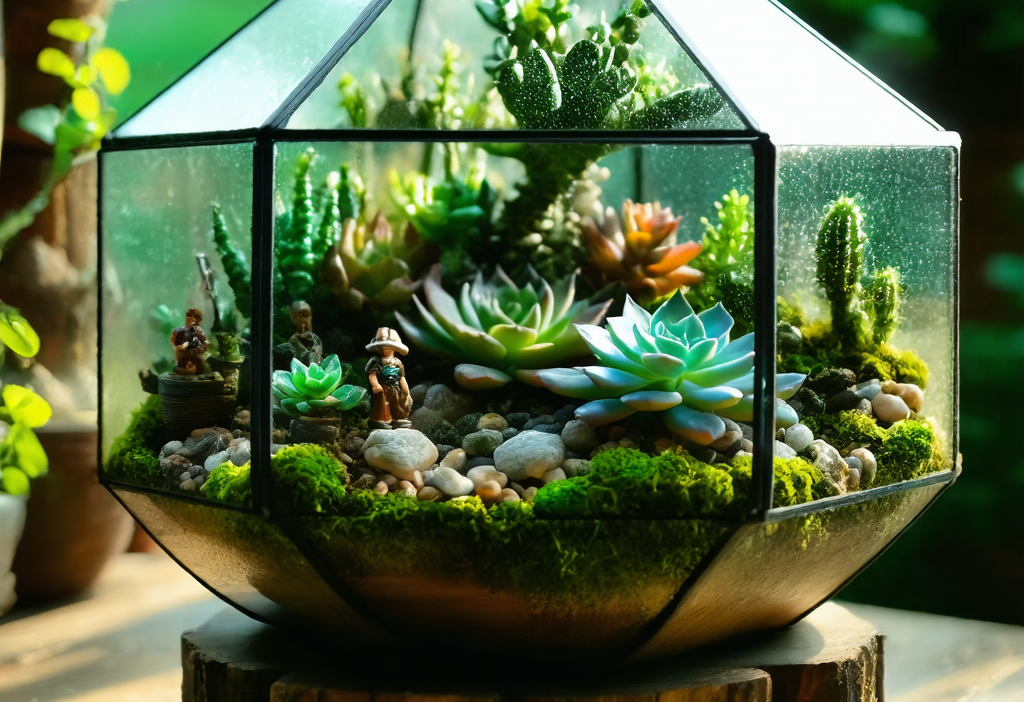Discover the Magic of DIY Terrariums
Terrariums are more than just a trend; they’re a beautiful way to bring nature indoors. Whether you’re an experienced gardener or someone who’s never touched soil before, creating a terrarium can be both fun and rewarding. In this guide, we’ll walk you through the process of making your own DIY terrarium, from selecting materials to maintaining your new glass garden.
What is a Terrarium?
A terrarium is a self-contained ecosystem inside a transparent container, typically made of glass. These miniature gardens can house plants, rocks, moss, and even small figurines or decorative elements. They’re perfect for adding a touch of greenery to your home without needing much space.
Materials You’ll Need
To create a DIY terrarium, you’ll need:
- A glass container with an opening wide enough to insert plants and materials
- Activated charcoal
- Pebbles or small rocks
- Sphagnum moss or sheet moss
- Soil suitable for the plants you choose
- Plants (succulents are a great choice for beginners)
- Decorative elements like figurines, marbles, or small trinkets
- Gloves and tools for planting
Choosing the Right Plants
Succulents are ideal for terrariums because they thrive in low-maintenance environments. Look for small varieties like mini cacti, stonecrop, or echeveria. Other good options include:
- Ferns for a lush, tropical look
- Mosses for ground cover
- Small bromeliads for a pop of color
Remember to consider the size and growth rate of your plants to ensure they have enough space in your container.
Step-by-Step Guide to Building Your Terrarium
1. Start with a Clean Container: Wash your glass container thoroughly to remove any dirt or residue. Dry it completely before use.
2. Add Drainage: Place a layer of pebbles or small rocks at the bottom of the container. This helps prevent water from pooling and keeps roots healthy.
3. Add Activated Charcoal: Sprinkle a thin layer of activated charcoal on top of the rocks. This helps prevent mold growth and keeps the air inside fresh.
4. Layer Moss: Add a layer of sphagnum moss or sheet moss to help retain moisture and create a natural base for your plants.
5. Add Soil: Place a layer of soil on top of the moss. Use enough soil to allow your plants’ roots to grow comfortably.
6. Plant Your Greens: Gently remove your plants from their pots and place them in the container, arranging them as desired. Be careful not to overcrowd the space.
7. Add Decorative Elements: Personalize your terrarium by adding small figurines, beads, or other decorative items. These can add character and make your creation unique.
8. Seal (Optional): If you’re using a lid, place it on top to create a closed ecosystem. If not, leave the container open for plants that need more airflow.
Tips for Success
Lighting: Place your terrarium in bright, indirect light. Avoid direct sunlight, as it can overheat and damage the plants.
Watering: Most terrariums require minimal watering. If the soil feels dry to the touch, gently mist with water or add a small amount through the opening. Overwatering is a common mistake, so be careful not to saturate the soil.
Maintenance: Regularly check for signs of mold or rot, especially if your terrarium is sealed. If you notice any issues, open the container and allow it to air out before addressing the problem.
Customize Your Creation
Your terrarium is a canvas for creativity! Experiment with different plant combinations and decorations to make each one unique. Try adding colored sand for a beach theme or tiny fairy figurines for a magical touch. You can also use different types of containers, such as fish bowls or vintage jars, to give your terrarium a distinctive look.
With these simple steps, you’ll be well on your way to creating a beautiful DIY terrarium that adds life and beauty to any room. Whether it’s a gift for a loved one or a personal project, this miniature garden is sure to bring joy and inspiration to all who see it.





